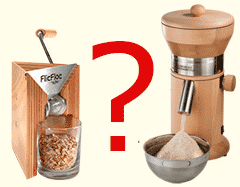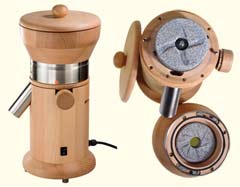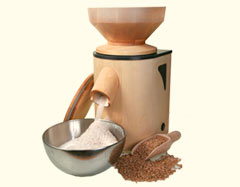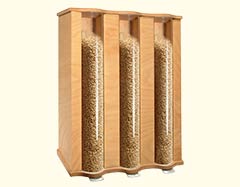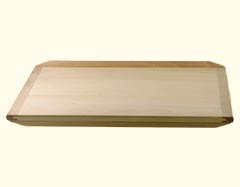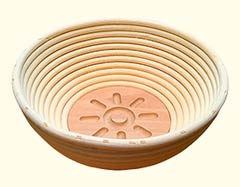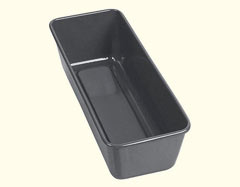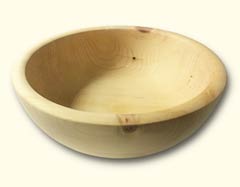Why a grain mill?
Why grind your own grain?
Here you will learn in brief why there are grain mills for home use at all and why a purchase is indispensable for anyone who wants to eat a wholesome diet.
The grain in its entirety is best freshly milled
Prof. Dr. Kollath
Holistic nutrition.
With his book "The Order of our Food", the physician and nutrition researcher Werner Kollath laid the foundation for a "holistic" nutrition theory in 1942: whole food nutrition. Kollath's approach was that the usual scientific nutritional theory gains its knowledge by separating the individual components of food chemically, physically and physiologically, analysing them and observing their effects. It thus considers partial values, which, however, say little about the "full value" of the whole food. The natural food as a whole thereby disappears more and more from science.
Basic rule
As fresh and natural as possible
In contrast, Kollath formulated the basic rule of wholefood nutrition: "The food should be as natural as possible" The less processed, i.e. the more natural the food, the greater the chance that it contains all the important components. Almost every processing reduces the content of ingredients. The fresher and less processed = more natural a food is, the more wholesome it is.
First recipes
Schnitzer intensive diet and normal diet
Building on Dr. Kollath's scientific findings and in collaboration with him, Dr. Schnitzer developed recipes for whole-food nutrition for healthy people to maintain their health and for sick people to recover ( "Schnitzer Intensive Diet, Schnitzer Normal Diet"). He achieved many healing successes in the therapy of civilisation diseases (e.g. high blood pressure, diabetes) with his recipes. More than 50 years ago, in 1964, Dr. Schnitzer warned those responsible in politics and government of the health disaster that would inevitably befall the population due to incorrect nutrition. Dr. Schnitzer not only educated, but also developed, built and sold electric grain mills for the home.
Aspirations
Whole food approach
Whole food nutrition in today's teaching has even broader claims. This means that the connections between nutrition and health are only seen as a partial aspect of the whole food system. Ecological, social, economic and thus political aspects are included as additional criteria. This becomes clear in the definition of wholefood nutrition (v. Koerber, Männle, Leitzmann):
In food selection, a division is made into four value levels, which are intended to give the consumer a practical orientation. The nutritional-physiological quality serves as the primary classification criterion; in addition, ecological and social aspects are taken into account.
Conclusion
As fresh and whole as possible
Cereals are only wholesome and beneficial for a healthy diet with their whole components (husk, germ and endosperm). Since vital substances and minerals volatilise very quickly after milling, it is optimal if the grain is further processed immediately after milling.

